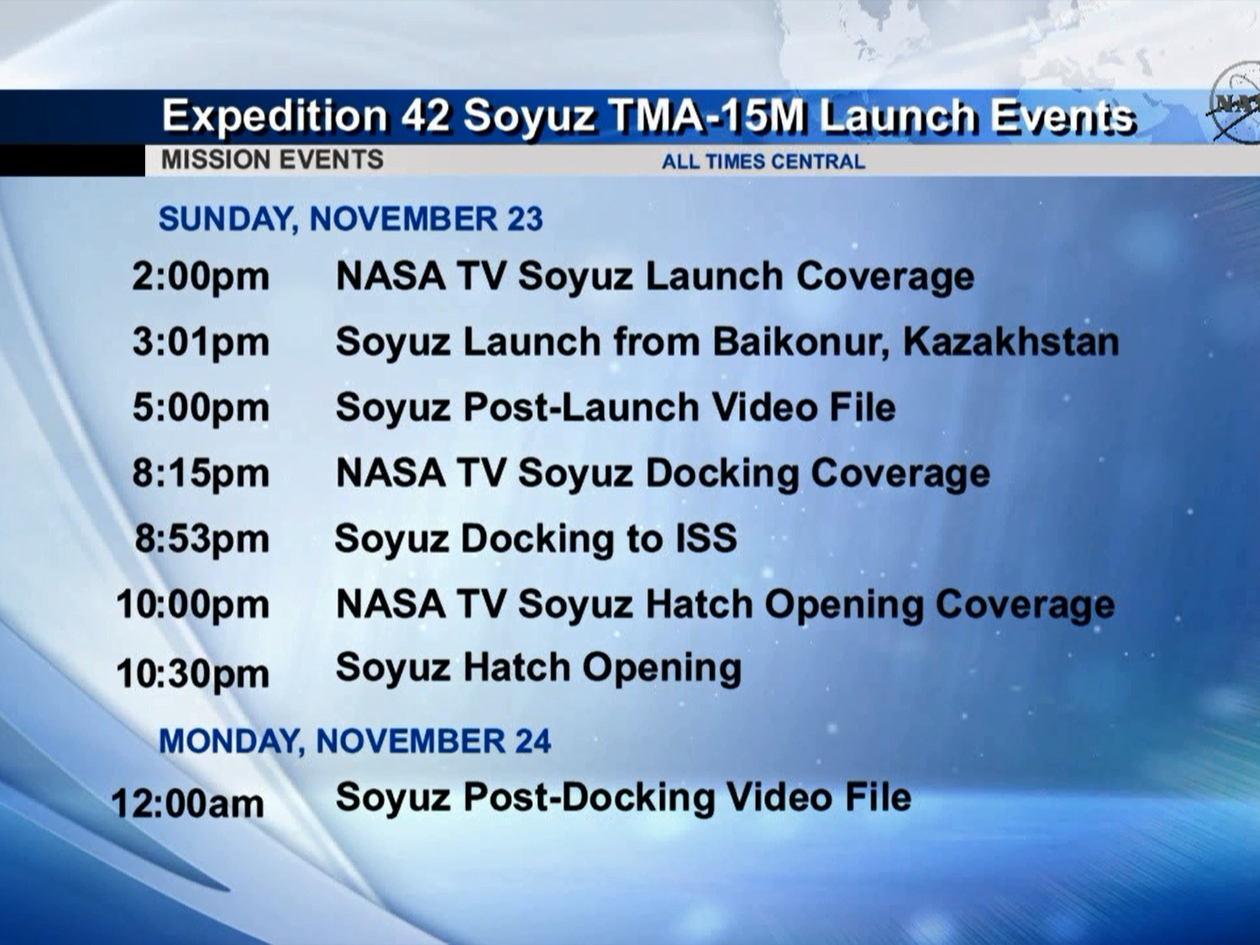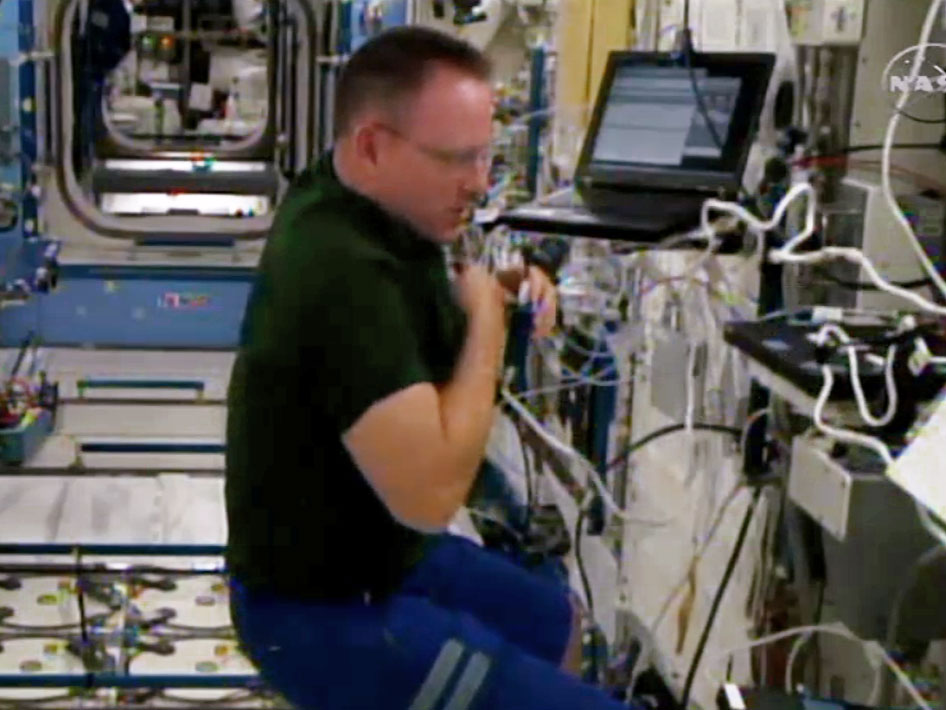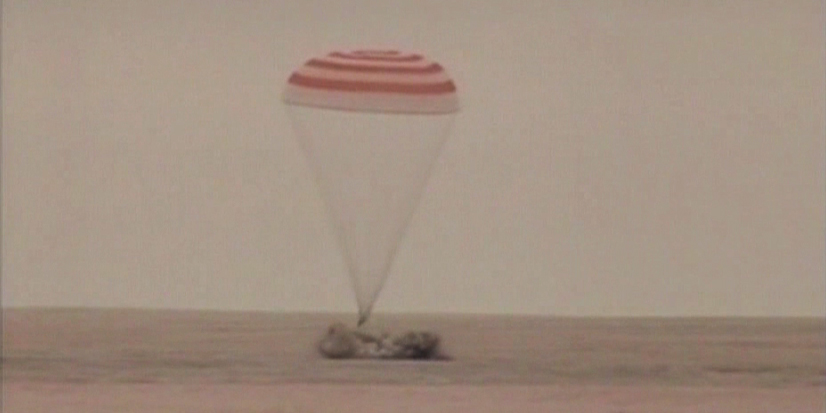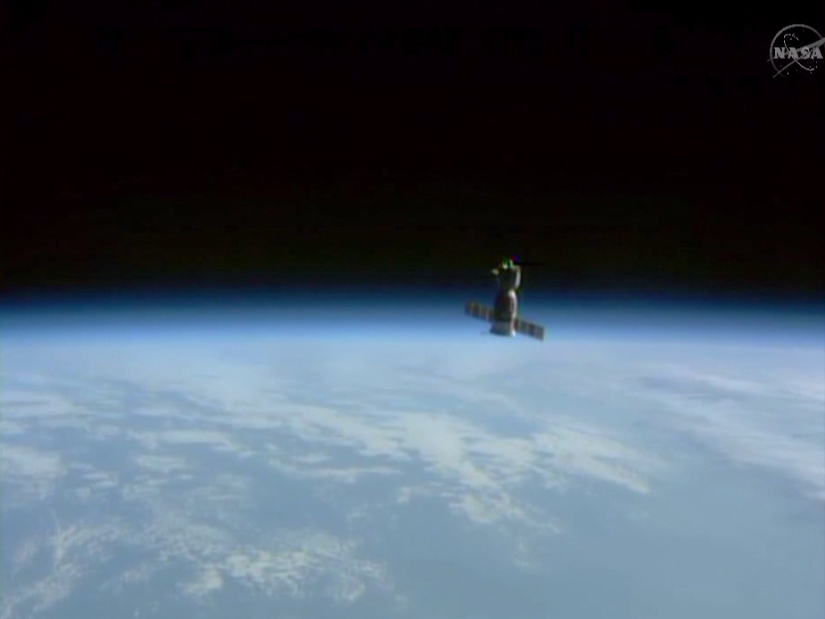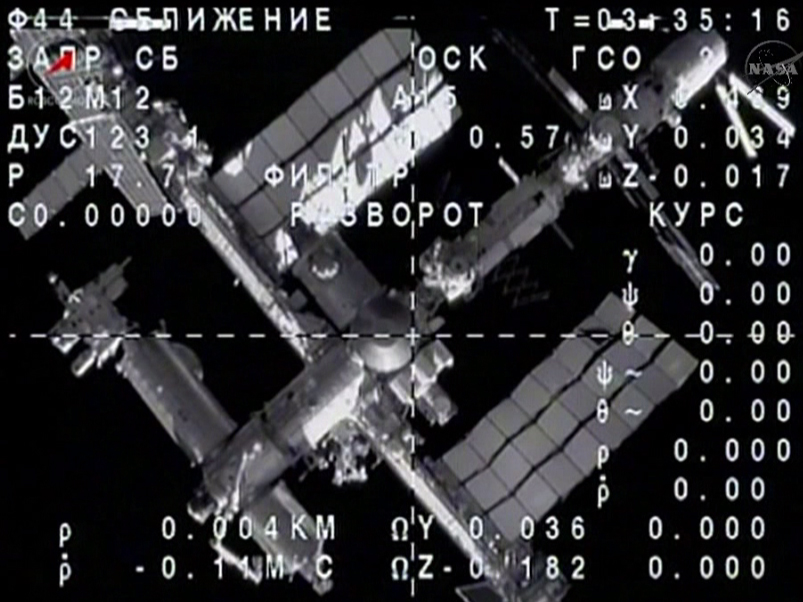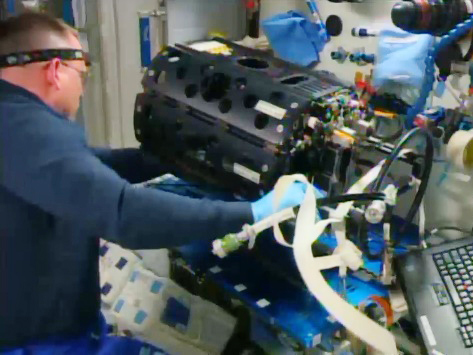
Commander Barry Wilmore worked throughout the day Tuesday in the Destiny laboratory’s Combustion Integrated Rack replacing hardware that fuels experiments. Afterward, he drained a waste water tank in the Tranquility node then moved on to a Health Maintenance System test.
› Read more about the Combustion Integrated Rack
Flight Engineer Alexander Samokutyaev replaced a battery module in the Zvezda service module then repaired and photographed an air duct. His fellow cosmonaut, Elena Serova, checked Russian sensors that monitor air pressure then proceeded with disinfectant work to prevent microbial growth in the Zarya module.
A new trio of Expedition 42 crew members is relaxing at the Cosmonaut Hotel crew quarters in Kazakhstan. Soyuz Commander Anton Shkaplerov and Flight Engineers Terry Virts and Samantha Cristoforetti played games, had medical checks and planted trees during a traditional ceremony Tuesday.
Their Soyuz TMA-15M spacecraft is being readied for its roll out to the launch pad at the Baikonur Cosmodrome on Friday. The new crew will launch aboard the Soyuz on Sunday for a near six-hour ride to the International Space Station’s Rassvet module.
› Read about live NASA TV coverage of the Expedition 42 launch


